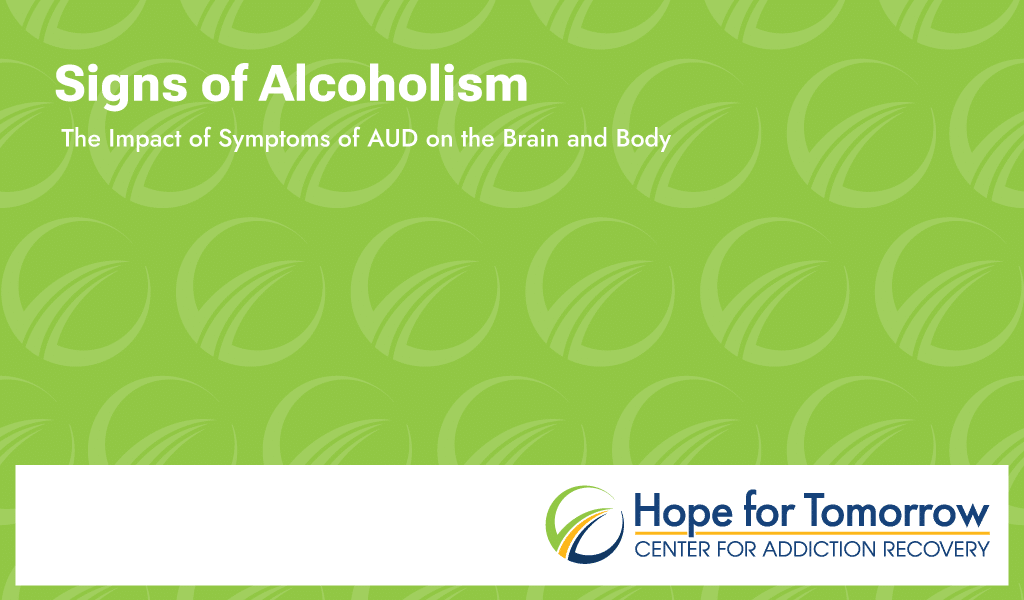

When the average person thinks of alcoholism, they might think of empty bottles of alcohol littered throughout the house as the aftermath of a man’s unhealthy drinking habits. The stereotype sometimes consists of violent behavior, slurred words, and arguments. If you have a loved one with an alcohol use disorder, you know it runs far deeper than that. It’s worrying over their health deteriorating, and them losing their job. It’s the joyful memories of life before alcohol turning painful, and wondering if you’ll ever be that happy again. It can happen to anyone: people across all genders and walks of life, people who hide their drinking and people who don’t, and people who are aggressive when intoxicated and those who aren’t. Alcohol use disorder doesn’t discriminate.
People are unique, and so are signs of alcoholism. They look different in each person, but if you looked at the symptoms of the 11% of American adults with alcohol use disorder in 2022, you would find some consistencies. Hope for Tomorrow empowers patients with these symptoms every day. If everyone is aware of these symptoms, and can recognize signs of alcoholism in those they know and care for, we can work together to help more people find recovery. Let’s cover the signs of alcoholism to look for today.
When does drinking a lot become an alcohol use disorder (AUD)? This is an understandable question, and in our society that encourages drinking culture, it can be even harder to draw the line between an acceptable amount of alcohol and what isn’t okay. Thankfully, there is a hard line in what qualifies as an alcohol use disorder, because it is a diagnosable medical condition. Alcohol use disorder diagnoses are guided by the Diagnostic and Statistical Manual of Mental Disorders, 5th Edition (DSM-5). If a person exhibits two or more of the following symptoms in 12 months, they can be diagnosed with an alcohol use disorder:
The DSM-5 considers those presenting two to three of these signs to have a mild alcohol use disorder, and someone exhibiting four to five to have a moderate one. Six of the signs listed are more, and the person can be diagnosed with a severe alcohol use disorder.

Alcohol use impacts every area of the brain and body. The alcohol you drink is absorbed in the stomach and intestines, and then distributed to the rest of the body through your blood. Once enough of it gets to your brain, you start to feel those well-known symptoms of intoxication. Alcohol is also a diuretic, so from even the first drink, your body is slowly becoming dehydrated. That dehydration leads to a hangover several hours after drinking.
Just one night of alcohol use can impact your brain and body. The chronic alcohol use that comes with an alcohol use disorder can cause far more damage.
Alcohol use disorder is more than intoxication, but you can keep an eye out for recurring symptoms of intoxication to gauge the likelihood of someone having an alcohol use disorder. The more often you see the following symptoms, the more reason there is for concern:
With these symptoms frequently come hangover symptoms the following day, such as headache, nausea, vomiting, light sensitivity, and body aches, to name a few. It’s difficult to function with frequent hangovers. Working through these symptoms is hard, and it’s far easier to lie down than to tend to life’s responsibilities when you don’t feel well. This can result in work and school performance declining, and in severe cases, losing jobs.
Aside from these physical challenges, persistent alcohol use can cause serious health complications. It can irritate the digestive system, causing ulcers. Alcohol can cause brain cells to shrink, blood pressure to rise, and liver disease, which is fatal when untreated. It also weakens the immune system, making you more susceptible to illnesses that can cause additional damage to a body already under stress from alcohol use disorder.
Alcohol is a depressant, meaning it ramps up inhibitory neurotransmitters and lowers excitatory ones. When alcohol is consistently present in your brain, your brain adapts to try to find a balance. This ends with lowered levels of inhibitory neurotransmitters and increased levels of excitatory ones when you aren’t drinking.
These changes subsequently impact mental health and behavior. People’s personalities may change due to their alcohol use disorder. They may do anything they can to get more alcohol and avoid withdrawal symptoms. They might drink all day, or only show up to social functions if they know alcohol is involved. They’ll likely become more impulsive, which only increases the difficulty of resisting alcohol.
These paired with the physical signs of alcoholism can have dire consequences on relationships. Those with alcohol use disorder may spend less time on healthy hobbies they used to enjoy in favor of drinking, and may find new friends who don’t question their drinking habits. Dangerous accidents are more likely for those with alcohol use disorder too, as they’re more likely to drive under the influence. If they try to operate other machinery while intoxicated, hungover, or experiencing withdrawal symptoms, they’re also more likely to get hurt.
Alcohol use disorder is serious, and its impact shouldn’t be underestimated. It can destroy lives, devastate people’s health, and in some cases, cause death. The following statistics put that fact into perspective:
For as dire as those statistics are, there is hope. Know you’re not alone, and here is proof:
While someone having an alcohol use disorder is never anything to celebrate, knowing others are going through the same experiences as you can be comforting. Striving for recovery is easier when you aren’t alone.

If these signs sound familiar, you may feel discouraged. Realizing the negative impact alcohol use disorder can have on someone’s health and life can be scary. The good news is that abstaining from alcohol can reverse many of these changes – especially in the brain.
That doesn’t make it easy. Anyone living with an alcohol use disorder, whether they have it themselves or are a loved one of someone who has it, can tell you that. No one should try to recover alone, and this is especially true for those who exhibit many signs of alcoholism. Whether you’re worried about your own drinking habits or those of a loved one, it’s time to learn more about treatment for alcohol use disorder. Alcoholism rehab might be a good option for you.
Hope for Tomorrow is a substance use recovery center located in West Virginia. We’re passionate about helping everyone who walks through our doors find healing, no matter who they are or where they come from. Call us at 877-679-8162, and seek treatment today for a brighter tomorrow.